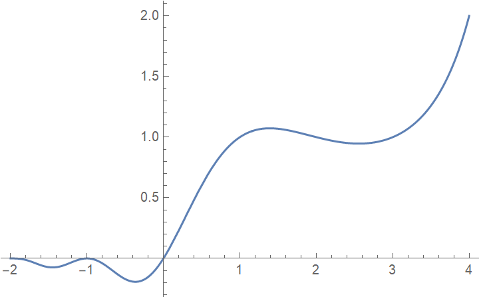The factorial of a positive integer n is the product of the numbers from 1 up to and including n:
n! = 1 × 2 × 3 × … × n.
The superfactorial of n is the product of the factorials of the numbers from 1 up to and including n:
S(n) = 1! × 2! × 3! × … × n!.
For example,
S(5) = 1! 2! 3! 4! 5! = 1 × 2 × 6 × 24 × 120 = 34560.
Here are three examples of where superfactorial pops up.
Vandermonde determinant
If V is the n by n matrix whose ij entry is ij−1 then its determinant is S(n − 1). For instance,
V is an example of a Vandermonde matrix.
Latin squares
The number of Latin squares of size n is bounded below by S(n). More on Latin squares and upper and lower bounds on how many there are here.
Permutation tensor
One way to define the permutation symbol uses superfactorial:
Barnes G-function
The Barnes G-function extends superfactorial to the complex plane analogously to how the gamma function extends factorial. For positive integers n,
Here’s plot of G(x)

produced by
Plot[BarnesG[x], {x, -2, 4}]
in Mathematica.

Your definition for G(n) seems to only be defined when n is a positive integer.
The identity for G above is only valid for positive integers. It’s not a definition. There is a closed-form definition of G. It’s a little complicated, but if I remember correctly it just involves gamma, psi (derivative of log gamma), and exp.